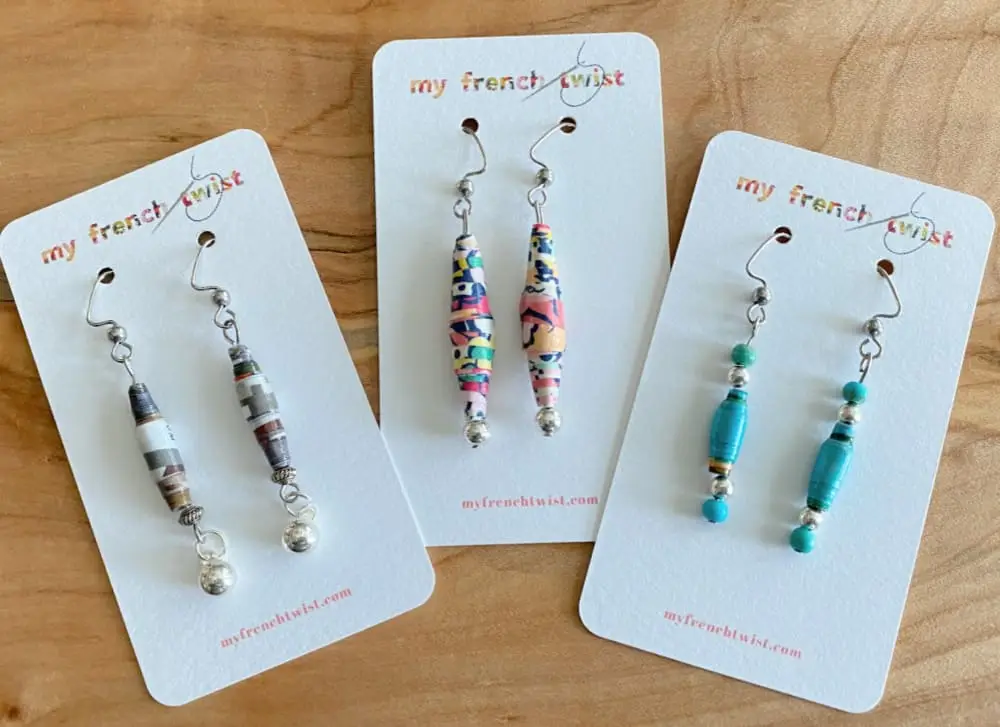What are the techniques involved in creating recycled catalog jewelry?


Recycled catalog jewelry is a unique and eco-friendly form of handmade jewelry that is gaining popularity in the world of sustainable fashion. This type of jewelry is created using techniques that involve repurposing and upcycling materials from old catalogs and magazines. In this article, we will explore the various techniques involved in creating recycled catalog jewelry, highlighting its benefits and the steps involved in the process.
Benefits of Recycled Catalog Jewelry
Recycled catalog jewelry offers several benefits, making it an attractive choice for those who are conscious about the environment and sustainability. Some of the key benefits include:
1. Eco-friendly: By using materials from old catalogs and magazines, recycled catalog jewelry helps reduce waste and minimizes the need for new resources. This makes it a sustainable and environmentally friendly choice.
2. Unique and Creative: Each piece of recycled catalog jewelry is one-of-a-kind, as it is made from different pages of catalogs and magazines. This uniqueness adds a creative and artistic touch to the jewelry, making it stand out from mass-produced accessories.
3. Affordable: Since the materials used in recycled catalog jewelry are readily available and often free, the cost of production is relatively low. This affordability makes it accessible to a wider audience, allowing more people to enjoy sustainable fashion.
Techniques Involved in Creating Recycled Catalog Jewelry
Creating recycled catalog jewelry involves several techniques that transform old catalogs and magazines into beautiful accessories. Here are the key techniques used in the process:
1. Paper Cutting: The first step in creating recycled catalog jewelry is to carefully cut out desired shapes and patterns from the pages of old catalogs and magazines. This can be done using scissors or craft knives, depending on the intricacy of the design.
2. Folding and Rolling: Once the desired shapes are cut out, they can be folded or rolled to create different elements of the jewelry. For example, strips of paper can be rolled tightly to create beads, while folded pieces can be used to make pendants or charms.
3. Coating and Sealing: To protect the paper and give it a polished finish, a coating or sealing technique is applied. This can involve using clear varnish, Mod Podge, or a similar sealant to ensure the jewelry is durable and long-lasting.
4. Assembling: After the individual components are created and sealed, they are assembled together using various techniques such as wire wrapping, stringing, or gluing. This step allows the different elements to come together to form a cohesive piece of jewelry.
5. Finishing Touches: Once the jewelry is assembled, additional finishing touches can be added to enhance its appearance. This can include attaching findings such as clasps, jump rings, or chains, as well as adding embellishments like beads or charms.
Steps Involved in Creating Recycled Catalog Jewelry
To create recycled catalog jewelry, the following steps are typically followed:
1. Gather Materials: Collect old catalogs and magazines that will serve as the source material for the jewelry. Look for catalogs with colorful and interesting images that can be transformed into unique jewelry pieces.
2. Select Designs: Choose the designs and shapes you want to create for your jewelry. This can include earrings, necklaces, bracelets, or even rings. Consider the size and thickness of the paper when selecting designs.
3. Cut and Prepare: Carefully cut out the desired shapes and patterns from the pages of the catalogs. Prepare the paper by folding or rolling it as needed to create the different components of the jewelry.
4. Coat and Seal: Apply a coating or sealant to protect the paper and give it a polished finish. This step is crucial to ensure the durability and longevity of the jewelry.
5. Assemble and Finish: Assemble the different components of the jewelry using wire wrapping, stringing, or gluing techniques. Add findings and embellishments to complete the piece and give it a professional look.
6. Quality Check: Before finalizing the jewelry, conduct a quality check to ensure that all components are securely attached and the piece is well-crafted. Make any necessary adjustments or repairs if needed.
7. Packaging and Presentation: Once the jewelry is complete, package it in an eco-friendly manner, such as using recycled or biodegradable materials. Present the jewelry in an appealing way to showcase its unique and sustainable nature.
In conclusion, creating recycled catalog jewelry involves techniques such as paper cutting, folding, rolling, coating, sealing, assembling, and adding finishing touches. This eco-friendly form of handmade jewelry offers several benefits, including its sustainability, uniqueness, and affordability. By repurposing materials from old catalogs and magazines, recycled catalog jewelry contributes to the growing movement of sustainable fashion. So, the next time you come across an old catalog, consider transforming it into a beautiful piece of jewelry that not only looks great but also helps protect the environment.
Recent Posts
How do I create an engaging and informative online quiz or assessment?
Creating an engaging and informative online quiz or assessment can be a powerful tool for… Read More
What are the most effective methods for managing and reducing work-related stress in the hospitality industry?
Work-related stress is a common issue in the hospitality industry, where employees often face long… Read More
How can I improve my assertiveness and communication skills in a leadership position?
In a leadership position, assertiveness and effective communication skills are crucial for success. Being able… Read More
What are the key elements of a successful employee recognition and rewards program?
Employee recognition and rewards programs play a crucial role in motivating and engaging employees, as… Read More
How do I effectively manage and respond to customer feedback and reviews?
Customer feedback and online reviews play a crucial role in shaping a company's reputation and… Read More
What are the best strategies for effective time management as a stay-at-home parent?
Effective time management is crucial for stay-at-home parents who juggle multiple responsibilities on a daily… Read More